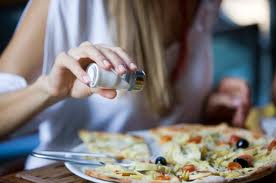By Andris Vassilios - Dietitian
Salt is responsible for high blood pressure. Even in people who do not suffer from hypertension, excessive salt consumption can cause it with dramatic consequences as heart attack and stroke are inextricably linked to high blood pressure.
It can also cause kidney problems (ulcers), contribute to calcium loss, increase the risk of osteoporosis, and increase the risk of stomach cancer. Salt itself has no calories and therefore does not make us fat. Of course, it disrupts the sodium-potassium balance inside and outside the cell membranes and makes it difficult for them to function properly.
Each gram of salt binds about 70 grams of water to the tissues of the body. Therefore, excessive consumption can create fluid retention, resulting in the known bloating. Also, the presence of an unbalanced amount of salt and water in the tissues, causes a slowing of blood circulation and. a type of tissue hyperemia, with consequent cellulite, obesity, etc. Also, people with kidney problems who consume a lot of salt may experience swelling in the legs, arms and face.
Suggested amounts of salt for all ages:
• 1 to 12 months - 1gr. salt per day (0.4g sodium)
• 1 to 3 years old - 2gr. salt per day (0.8g sodium)
• 4 to 6 years old - 3gr. salt per day (1.2g sodium)
• 7 to 10 years old - 5gr. salt per day (2g sodium)
• 11 and above - 6gr. salt per day (2.4g sodium)
Tips to eat less salt:
1. Remove the salt shaker from the table.
2. Eat fresh products (fruits, vegetables, fish).
3. Boil pasta, rice, vegetables and legumes without adding salt to the water.
4. Add lemon juice to casseroles.
5. Avoid canned products.
6. Reduce the salt mentioned in the recipes by reducing it to a quarter or even half.
7. Prefer frozen vegetables without salt instead of canned ones.
8. Avoid eating foods rich in salt, such as salted cheeses and nuts, salted butter and margarine, smoked, salted or canned meats and fish, high-salt meats, canned vegetables, Commercial compotes, concentrated tomato juice, olives, mayonnaise, ready-made sauces, vegetable and meat broth cubes, fast food, ready-made pizzas, commercial skewers, snacks such as chips, shrimp, popcorn corn, baking soda and baking powder.
9. Read the labels of the foods you buy to check their sodium content and choose the ones that have the least.

